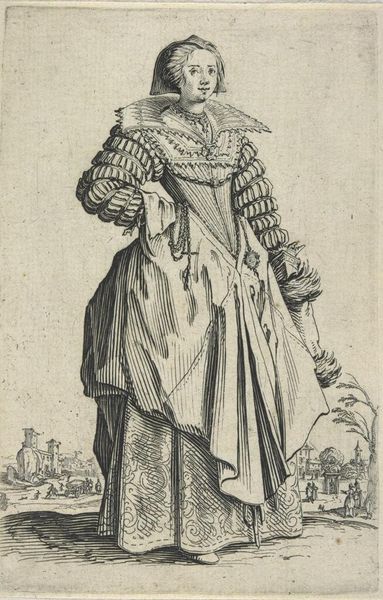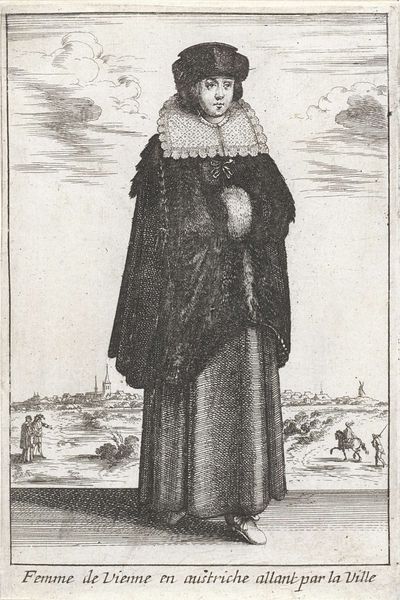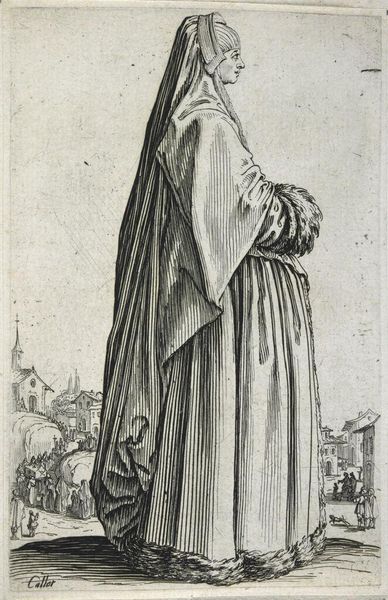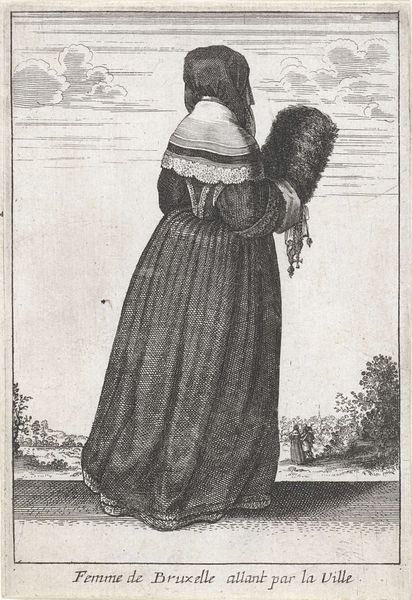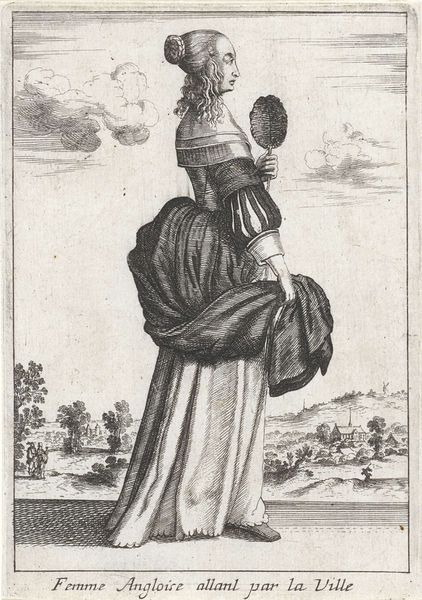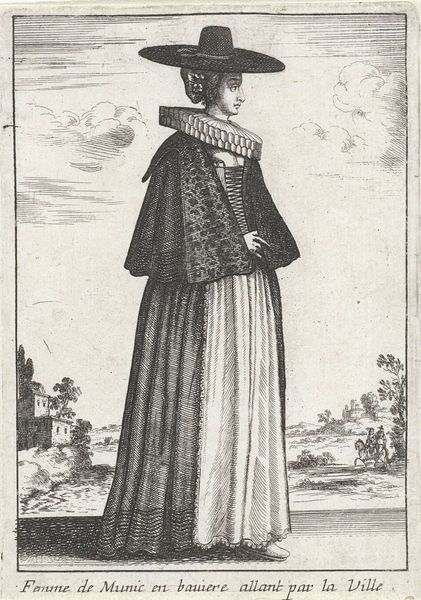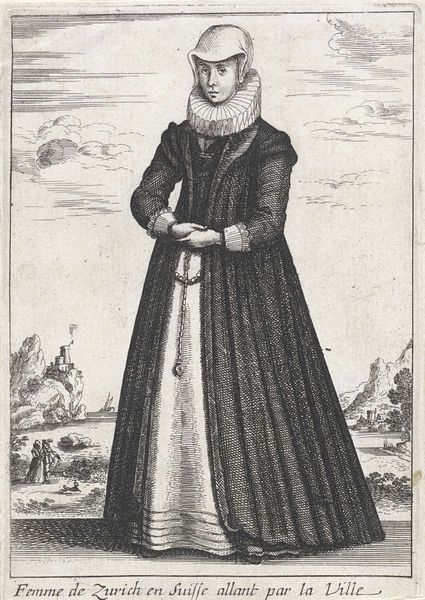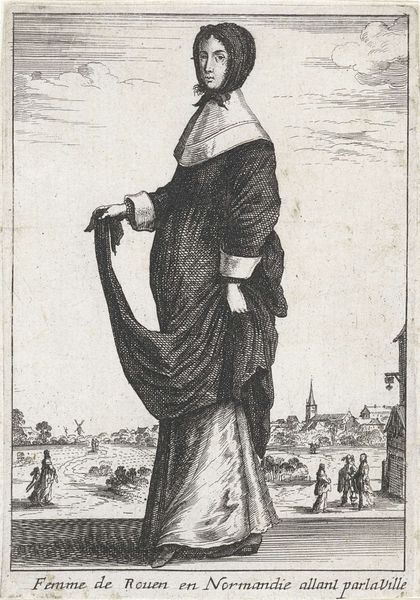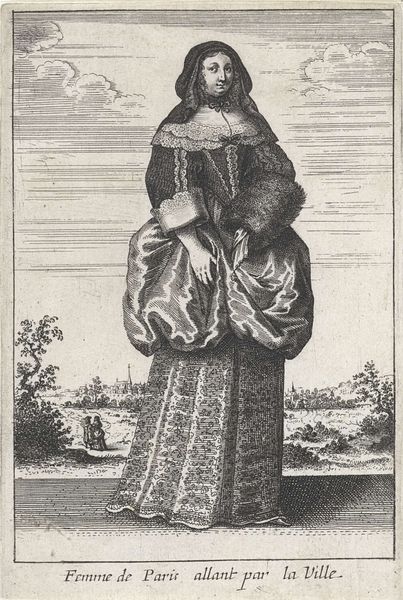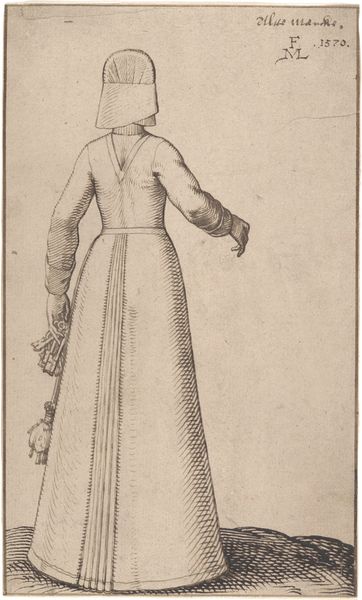
print, engraving
#
portrait
#
baroque
# print
#
old engraving style
#
landscape
#
genre-painting
#
engraving
Dimensions: height 138 mm, width 97 mm
Copyright: Rijks Museum: Open Domain
Editor: So, this is "Femme de Dieppe allant par la Ville," an engraving from 1662, artist unknown. I'm struck by the sheer scale of the woman’s collar and cape compared to the almost miniature landscape in the background. What can you tell me about this piece? Curator: Well, let’s think about the context. Consider how 17th-century fashion was not just about aesthetics. This enormous collar acts as a literal barrier. What does that barrier represent to you in terms of social status and female agency at that time? Editor: I guess it represents wealth and perhaps an attempt to command respect in public, or protect oneself, or… Curator: Precisely! This image engages with contemporary issues surrounding gender and power dynamics within Dutch society. The title indicates she’s on her way to the town; how do you see her fitting in, or perhaps not fitting in? Is this image about the individual, or about something bigger? Editor: Hmm… well, the scale of the collar suggests she *wants* to stand out, but her reserved posture and guarded expression makes her seem… hesitant. Maybe the print reflects some kind of societal pressure, the struggle between wanting individuality and the constraints placed upon women? Curator: Exactly! This piece gives us the opportunity to explore representations of femininity during the Baroque period. Also, consider how prints made art accessible. Do you see a connection to contemporary forms of activism in its role as a form of communication? Editor: I do! I guess that’s why images from this time are so valuable for understanding social issues. It is as much about showing reality as framing a position within a social structure. Thanks so much! Curator: My pleasure. Remember, art isn't just something pretty to look at. It reflects the lives, politics, and social tensions of its time, challenging us to question our present.
Comments
No comments
Be the first to comment and join the conversation on the ultimate creative platform.
